Liquid level sensors with intrinsic safety approval for measuring the level of fluid contents where flammable gas or dust is present.
Liquid level sensor for mounting externally to a storage tank or submersing down a borehole in an intrinsically safe zone, or submersible liquid level sensors with high integrity cable terminations to provide a permanent waterproof seal IP68 rating.
Measure the tank contents of water, oil, chemicals or viscous media and monitor environmental contaminants on landfill and petrochemical sites.
Products
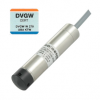 LMP307 Submersible Level Transmitter - Submersible level transmitter for measuring liquid level with a 4-20mA current loop or a 0-10V voltage output plus optional ATEX approval for intrinsically safe use in hazardous areas in ranges from 1mH2O up to 250mH2O. The LMP307 is suitable for use on potable water with no leaching, and can be supplied with a drinking water certificate according to DVGW and KTW.
LMP307 Submersible Level Transmitter - Submersible level transmitter for measuring liquid level with a 4-20mA current loop or a 0-10V voltage output plus optional ATEX approval for intrinsically safe use in hazardous areas in ranges from 1mH2O up to 250mH2O. The LMP307 is suitable for use on potable water with no leaching, and can be supplied with a drinking water certificate according to DVGW and KTW.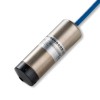 LMK458 Marine Approved Hydrostatic Level Transmitter - Marine approved level transmitter with 4-20mA output for measuring level of contents inside ship ballast, fuel, liquid cargo or wastewater tanks
LMK458 Marine Approved Hydrostatic Level Transmitter - Marine approved level transmitter with 4-20mA output for measuring level of contents inside ship ballast, fuel, liquid cargo or wastewater tanks
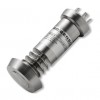 DMP331P Hygienic Flush Pressure Transmitter
DMP331P Hygienic Flush Pressure Transmitter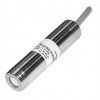 LMK307 Submersible Waste Water Level Sensor
LMK307 Submersible Waste Water Level Sensor DPT200 Pressurised Tank Level Differential Pressure Transmitter
DPT200 Pressurised Tank Level Differential Pressure Transmitter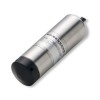 LMK382 Low Range IP68 Waste Water Level Transmitter
LMK382 Low Range IP68 Waste Water Level Transmitter
Applications
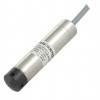 Fleet management system submersible 3000mm height petrol tank level ATEX rated pressure sensor - ATEX rated submersible pressure sensor for fleet management system (FMS) petrol applications .
Fleet management system submersible 3000mm height petrol tank level ATEX rated pressure sensor - ATEX rated submersible pressure sensor for fleet management system (FMS) petrol applications .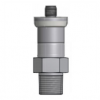 65 inch range 4-20mA output intrinsically safe IBC tote wastewater level transmitter - An intrinsically safe externally mounted liquid level transmitter for measuring the height of wastewater over a range of 0 to 65in from the 1/2 NPT male process connection, and sending the corresponding 4-20mA signal through the M12 connector electrical connection.
65 inch range 4-20mA output intrinsically safe IBC tote wastewater level transmitter - An intrinsically safe externally mounted liquid level transmitter for measuring the height of wastewater over a range of 0 to 65in from the 1/2 NPT male process connection, and sending the corresponding 4-20mA signal through the M12 connector electrical connection. 1 barg IS certified 4-20mA submersible leachate pressure sensor for tank level gauging use - An intrinsically safe submersible wastewater gauge pressure sensor for tank level gauging use to measure pressure of leachate over a range of 0 to 1 bar g from the G1/2 male process connection, and sending the corresponding 4-20mA signal through the submersible cable electrical connection.
1 barg IS certified 4-20mA submersible leachate pressure sensor for tank level gauging use - An intrinsically safe submersible wastewater gauge pressure sensor for tank level gauging use to measure pressure of leachate over a range of 0 to 1 bar g from the G1/2 male process connection, and sending the corresponding 4-20mA signal through the submersible cable electrical connection.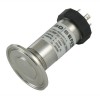 50in range 4-20mA output chemical liquid level sensor with flush diaphragm and IS approval - An intrinsically safe externally mounted liquid level sensor for measuring the height of a liquid chemical over a range of 0 to 50in from the triclamp process connection, and sending the corresponding 4-20mA signal through the M12 connector electrical connection.
50in range 4-20mA output chemical liquid level sensor with flush diaphragm and IS approval - An intrinsically safe externally mounted liquid level sensor for measuring the height of a liquid chemical over a range of 0 to 50in from the triclamp process connection, and sending the corresponding 4-20mA signal through the M12 connector electrical connection.
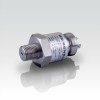 50mbarg range 4-20mA output petrol fill level pressure sensor for automotive testing use
50mbarg range 4-20mA output petrol fill level pressure sensor for automotive testing use Leachate holding tank, submersible level sensor for 5 meter depth
Leachate holding tank, submersible level sensor for 5 meter depth Rangeable fuel and freshwater submersible level sensor for ship tanks up to 1.6m high
Rangeable fuel and freshwater submersible level sensor for ship tanks up to 1.6m high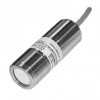 1 metre deep raw sewage ATEX approved submersible level transmitter
1 metre deep raw sewage ATEX approved submersible level transmitter Immersible sewage level transmitter for pressures up to 5 psi
Immersible sewage level transmitter for pressures up to 5 psi Immersible sewage level transmitter for pressures up to 15 psi
Immersible sewage level transmitter for pressures up to 15 psi Wastewater holding tank submersible 8 feet deep level monitoring pressure transmitter
Wastewater holding tank submersible 8 feet deep level monitoring pressure transmitter High temperature de-ionised water bath 300mm ATEX level sensor
High temperature de-ionised water bath 300mm ATEX level sensor
